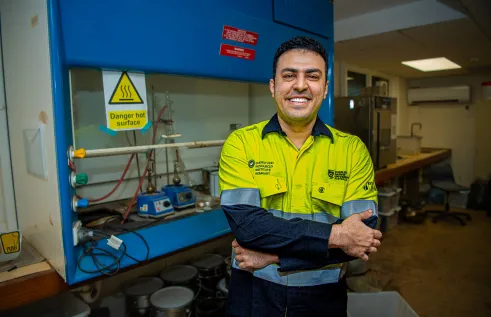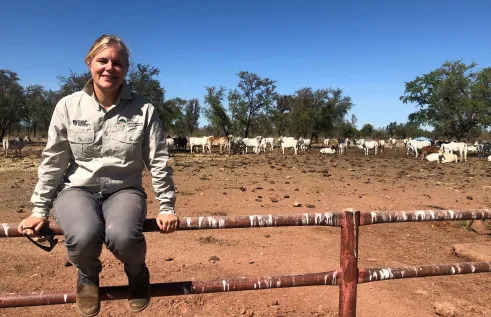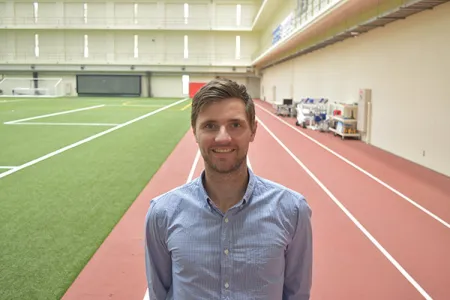NEWS ARTICLE
Digital devices to get bad backs back on track
A passion for sprinting and weightlifting has led a Charles Darwin University PhD graduate to a different pursuit, assisting workers to avoid debilitating back injuries.
Dr Sam Gleadhill, who is based in Japan at the country’s sports performance research centre, has been investigating the use of inertial sensors as a tool to monitor the way people lift weight and perform workplace tasks.
The small devices can be worn on a belt or taped to the skin and are designed to measure and analyse how people undertake repetitive and load-bearing movements.
Dr Gleadhill initially used the sensors to monitor weight lifting in athletes. However, with around 25% of Australians suffering from lower back pain daily and more than 50% having experienced back pain in the past month, he decided to change focus to the workplace.
“Inertial sensors are small, wearable devices that are capable of measuring the angles and speed of physical workplace tasks for a long period of time,” Dr Gleadhill said.
“By using these angle and speed measurements, we can monitor and calculate the stress that is going through the spine during lifting movements. Then we can identify risk factors and estimate the danger level of the task performed.
“We found that our devices and calculations were far more accurate than the manual methods currently used to evaluate workplace tasks for safety, in terms of low back pain and injuries.”
Dr Gleadhill said the inertial sensors were easily attached to a person’s body before work, allowing the monitoring of tasks without disruption.
“These devices are particularly helpful in jobs with repetitive movements or where awkward postures and heavy weights might be carried, such as product line factories, labouring work and firefighting,” he said.
“Repetitive lifting in unsafe postures causes major stress on the spine, which leads to low back pain and eventually some sort of injury.
“Australia currently spends around $4.8 billion per year on management of low back pain and it is the most common condition keeping older Australians out of the workforce.
“This research will assist workplaces to understand better how injuries can be prevented and adopt technologies to improve workplace safety for employees and employers.”
Dr Gleadhill undertook his research with the CDU College of Health and Human Sciences. He is currently completing a two-year research fellowship with the Japan Society for the Promotion of Science where he is investigating sprinting.
Related Articles

Where rubber meets the road: Old tyres are key to building tougher roads
Almost half of the Northern Territory’s worn-out tyres end up in landfills – with the rest exported interstate for recycling – but a study led by Charles Darwin University (CDU) is repurposing the discarded rubber to build stronger, sustainable roads that meet the NT’s unique needs.
Read more about Where rubber meets the road: Old tyres are key to building tougher roads
Social media subjecting Black women to radicalised digital policing
Influencers use oppression, manipulation and weaponisation to police Black women on social media, according to new research uncovering the entrenched nature of digital racism.
Read more about Social media subjecting Black women to radicalised digital policing
Moo-ving the boundaries: New research evaluates virtual fences for use on NT cattle stations
Cattle producers in Northern Australia face unique challenges when adapting tools like virtual fences on their properties, but new research from Charles Darwin University (CDU) is set to break down the barriers to this technology.
Read more about Moo-ving the boundaries: New research evaluates virtual fences for use on NT cattle stations
